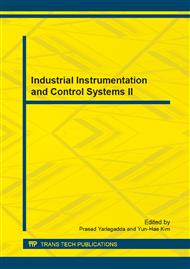p.779
p.784
p.789
p.794
p.799
p.804
p.811
p.815
p.820
Research on State of Charge Estimation for Power Battery of Electric Vehicle
Abstract:
An optimized battery state of charge (SOC) estimation method has been proposed in this paper. The method is based on extended Kalman filter (EKF) and combines Ah counting method and open-circuit voltage (OCV) method. According to the current excitation-response of a battery, the internal parameters of the battery model were identified by the method of least squares. Then the proposed estimation method is verified by experiments. The results show that the estimation method can reduce the cumulative error caused by long discharge and it can estimate the battery SOC effectively and accurately.
Info:
Periodical:
Pages:
799-803
Citation:
Online since:
July 2013
Authors:
Price:
Сopyright:
© 2013 Trans Tech Publications Ltd. All Rights Reserved
Share:
Citation:


